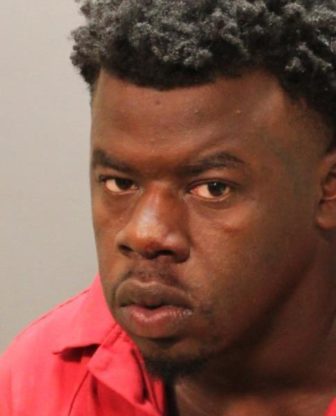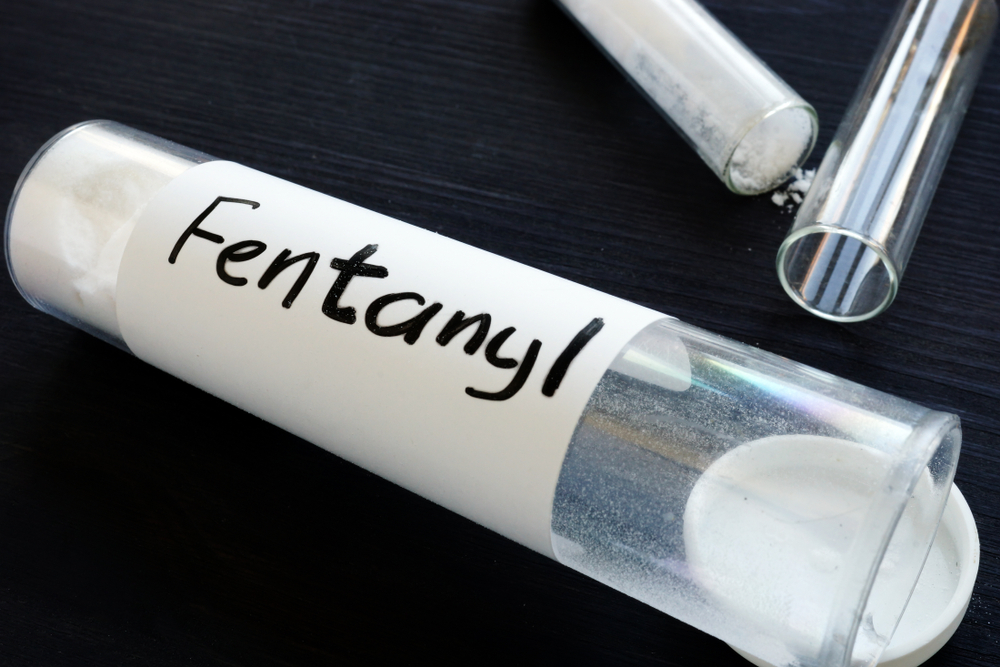JACKSONVILLE, Fla. — The move from Ohio to Florida was supposed to be a new beginning. On June 29, 2018, Timothy Sexton wrote on Facebook that he was nervous and excited to start his new job in Jacksonville. Though he’d miss his girlfriend and young son, who planned to join him in a few weeks, he wrote, “it’s what’s best for my family, and I.”
But the move turned out to be anything but the happy beginning the young father dreamed of. A little more than a month later, on Aug. 5, Sexton was dead at 26. The medical examiner found the powerful synthetic opioid fentanyl in his system. He was discovered in a car outside the house where he was staying.

Timothy Sexton
Under a controversial Florida law passed unanimously by the legislature in 2017, his death was immediately investigated as a murder.
A witness gave police the street name of the dealer who allegedly sold Sexton drugs the night before he was found. Jacksonville police quickly arranged two undercover buys from the suspect, Deonte “Black boi” Wadley; on Aug. 15, he was arrested, then charged with selling drugs within 1,000 feet of a school.
On March 21, a grand jury in the Fourth Circuit returned an indictment against Wadley for first-degree murder resulting from distribution of a controlled substance — fentanyl.
While other states have only relatively recently added drug-induced homicide laws to the books, Florida did so at the height of the drug war in 1982. Dealers can even be sentenced to death. (The state is not seeking death in this case. Wadley instead faces a maximum penalty of life in prison.)
In the more than 30 years since, drug dealers in Florida have rarely, if ever, been convicted of first-degree murder for selling a lethal dose.
The Florida Legislature added fentanyl to the list of substances that provide the grounds for such charges in October 2017. Since then, a handful of cases invoking the law have been filed around the state.

Deonte Wadley
No fentanyl dealers are facing a possible death sentence now. But with prosecutors under intense pressure to combat the opioid epidemic through any means possible, it may be only a matter of time before one is.
The harshness of the law remains controversial, however. Some, among them legal scholars, believe that, if there are not circumstances that establish intent, a first-degree murder conviction for a dealer whose customer died from an overdose could not survive a constitutional challenge.
The drug abuse treatment and drug law reform communities nearly universally agree that stiff penalties do not deter drug crime and may contribute to the crisis by discouraging people from reporting overdoses and seeking treatment.
“A tough-on-crime approach has a high likelihood of backfiring: overzealous law enforcement can lead fewer people to come forward when their companions are overdosing, thereby increasing health risks,” said a 2018 study about the opioid crisis in Public Health Reports. According to this theory, if Wadley, who does not have a history of violent crime, is sent to prison as a murderer, it will have no effect on the drug trade or the overdose rate.
Mandatory minimums
While other facets of the justice system, including drug laws, are in the midst of reform, the opioid epidemic is one area in which Florida lawmakers, police and prosecutors remain firmly committed to extreme punishments for the dealers and traffickers they believe responsible. When then-Gov. Rick Scott signed new mandatory minimums for fentanyl possession into law (three to four years for 14 grams, 15 years for 14 to 28 grams, 24 years for more than 28 grams), Talking Drugs, a drug law news publication, referred to it as “draconian.”
Critics believe the law will ensnare addicts who sell small quantities to support their habit, shipping them off to prison, which is largely seen as an ineffective setting to address the underlying causes of addiction. Further, because the law does not differentiate between pure fentanyl and drugs containing fentanyl, vastly different punishments could be meted out for possession of the same quantity of the drug.
The legislation also added fentanyl to the list of drugs that dealers can be charged with murder for for selling a deadly dose.
The public is against giving drug dealers the death penalty, according to Robert Dunham, executive director of Death Penalty Information Center, which tracks data and news associated with capital punishment.
“Notably, public opinion polls show Americans overwhelmingly disapprove of this idea,” Dunham said. A 2018 national survey by Rasmussen Reports found that only 33% approved of the death penalty for drug traffickers.
Nevertheless, many in law enforcement view the death penalty as a necessary tool to fight a deadly drug epidemic. And they have a powerful ally in the Oval Office. The president has on numerous occasions suggested the death penalty for drug dealers.
Though it is difficult to be certain, consensus is that thus far no one in the United States has been sentenced to death for selling drugs.
“I am not aware of any actual death cases for drug dealers for drug-related offenses,” Florida’s Fourth Judicial Circuit State Attorney’s Office said via email.
Though prosecutors are not seeking death for Wadley, the State Attorney’s responses to questions indicate that it was considered. Asked for the breakdown of votes by the death penalty review panel, the State Attorney’s Office did not respond, citing “grand jury secrecy laws, attorney work product, and our own investigative exemption.” On the same grounds, it also refused to provide the memo that prosecutors in potential death penalty cases in the circuit are required to provide to the panel.
Considering charging Wadley with a capital offense would not be particularly remarkable, as prosecutors typically consider all the potential punishments available to them. Pursuing the death penalty in such a case before a grand jury, on the other hand, is highly unusual.
Once the nation’s pill mill capital
The cause of the sudden increase of illicit opioid trade is no mystery in Florida. For years, pill mills — places where people essentially could buy pharmaceutical drugs — flourished without much hindrance from state government. Addicts, traffickers and dealers from all over the country flocked to the state to buy drugs. The state became known as the pill mill capital of America. At one time 85% of all sales of the opioid oxycodone occurred in Florida. In 2010, oxycodone caused roughly 1,500 deaths in Florida.
Seeking to reverse course, in 2010 Florida banned doctors from distributing narcotics in their offices.
Upon signing the law, Scott said, “This legislation will save lives in our state and it marks the beginning of the end of Florida’s infamous role as the nation’s pill mill capital.”
For a time, he was right. Sales of oxycodone in its many forms plummeted, falling 97% in the first six months of 2011, the New York Times reported.
With opioids no longer legally available, and street prices rising rapidly, addicts turned to a cheaper, readily available alternative: heroin. Heroin use soared, ushering in a new drug epidemic. As the crisis worsened, some questioned the wisdom of closing the pill mills, particularly without appropriating resources for treating the addicts who practically overnight found themselves short on supply.
Fentanyl worse than heroin
When synthetic, cheaper fentanyl roared onto the drug scene, the stage was set for a crisis that would make those caused by pill mills, then heroin, pale in comparison.
Deaths where fentanyl was either present or the cause climbed from roughly 300 in 2013 to more than 2,000 in 2017 in Florida, according to the 2017 Medical Examiners Commission Drug Report.
Opioids have flooded the streets of Jacksonville over the last several years, and the city has been hit particularly hard by the overdose epidemic.
While heroin itself is undeniably dangerous, fentanyl and its analogues are far more so. Fentanyl can be approximately 50 to 100 times more potent than morphine; analogues like carfentanil are even stronger.
Because fentanyl is cheap and creating the same high takes so little in comparison, often heroin and other drugs are cut with it. According to the DEA, “Many users believe that they are purchasing heroin and actually don’t know that they are purchasing fentanyl — which often results in overdose deaths.” In some instances, dealers aren’t even aware that the drugs they sell contain fentanyl. And because potency varies widely, it can be very difficult for even seasoned drug addicts who know they’re taking fentanyl to safely gauge dosage.
Fentanyl and its analogues have caused overdoses to skyrocket, according to the National Institute of Drug Abuse. The Florida Medical Examiners Association calculated that, in 2017, Jacksonville had by far the highest rate of fentanyl deaths of all Florida cities — more than 25 deaths per 100,000 residents.
First responders often administer naloxone, a rapid opioid reversal agent, multiple times a shift, sometimes to the same patient. The drug’s hold is so strong that emergency responders, who didn’t want their names used, said people on the verge of overdose have been known to refuse naloxone, not wanting to come down from their high.
Debate on harsher penalties
As the region grapples with the epidemic, Jacksonville’s top prosecutor has proven herself willing to prosecute dealers for drug-induced homicide. In May 2017, the office of Melissa Nelson, state attorney for the Fourth Judicial Circuit, filed such a charge for the first time against Trumaine Muller. She and the sheriff’s office used the case as an example of their tough-on-drugs approach to the opioid epidemic.
The murder charge was later dropped and case referred to federal court; Muller was subsequently convicted on federal charges of selling a lethal dose of fentanyl and sentenced to life in prison.
It didn’t take long for Nelson’s office to try to pin a first-degree murder rap on another alleged drug dealer: Deonte Wadley.
If convicted, Wadley would be the first to be convicted of this charge in the Fourth Circuit.
Some wonder if, in their haste to punish, law enforcement is bypassing historic intent requirements, as well as the principle that the harshest penalties are reserved for the “worst of the worst.” Others point to evidence that strict penalties do little to deter crime and cause unnecessary suffering to defendants’ loved ones and society at large.

Hannah Cox
“From the ’70s on we’ve had these laws passed and protocols where we’re trying to be ‘tough on crime,’” said Hannah Cox, national manager for Conservatives Concerned about the Death Penalty, an arm of Equal Justice USA that advocates for abolishing the death penalty.
Pointing to relatively low rates of cases solved for offenses like murder (59.4% nationally in 2016); higher rates of violent crime, including homicide, in jurisdictions with the death penalty; and the racial disparities in the criminal justice system, Cox said that instead of being tough on crime, the nation has been “tough on criminals.”
“For locking up all the people the U.S. does, we’re not getting any closer to solving these issues … violent crime, addiction levels,” she said.
As states fight the opioid epidemic with harsh laws that harken back to the war on drugs, there is a growing chorus of opposition.
A 2017 report by reform advocates at the Drug Policy Alliance made the case that these laws are counterproductive and inhumane, citing their ineffectiveness at deterring drug use or trade, the potential for misuse of prosecutorial discretion, perpetuation of racial disparities and the possibility of undermining 911 Good Samaritan laws and contributing to preventable deaths.
Complications from homicide charges
Though prosecutors in some jurisdictions have specifically asserted that they will not file murder charges against people who summon help or provide aid to an overdose victim, there is nothing in the drug-induced homicide statute preventing it. Further, Florida’s 911 Good Samaritan law, which provides prosecutorial immunity to people who seek assistance for themselves or another overdose victim, only covers charges of possession, not murder.
“Elevating punishments for drug-induced homicide charges has a chilling effect on people seeking medical assistance and, as a result, leads to more, not fewer, avoidable overdose fatalities,” the Drug Policy Alliance report’s authors state.
These charges also present potential problems proving all the elements of murder. Echoing others, Wadley’s attorney, Thomas Richard Garland II, said that prosecutors will have a problem establishing intent. He categorized the fentanyl-induced homicide law as “vague and overbroad,” suggesting that it is ripe for a challenge.
“Any law that makes the death penalty available in circumstances in which there is no intent to kill will face serious constitutional challenges, and these types of laws face other additional challenges, namely ... how does the government prove what a defendant’s intent was,” said Dunham of the Death Penalty Information Center.
The State Attorney’s Office disagrees, likening drug-induced homicide to felony murder laws that allow co-conspirators to be prosecuted for murder if someone dies during the commission of a dangerous felony, regardless of intent.
“The premise of ‘intent to kill’ is misleading as these cases are just a subset of felony murder. Intent to kill is not required under Florida statute — just intent to distribute the controlled substance that proximately causes death,” the State Attorney said via email.
Though many believe otherwise, under felony-murder and drug-induced homicide laws, intent to cause death is essentially irrelevant. Nevertheless, prosecutors will have to convince a jury that Wadley’s selling a deadly batch of drugs warrants convicting him of premediated murder. This would put selling a deadly batch of drugs on par with murder by violent means.
There are other facts that the prosecution will have to overcome to justify sending 23-year-old Wadley to prison for the rest of his life.
Nothing in the publicly available police file indicates that Wadley was present at the time of Sexton’s death or when he ingested the drugs. Nor has law enforcement charged him in any additional overdoses or claimed that Wadley himself mixed the batch, either of which could establish his knowledge of the deadly nature of the substance he is accused of selling.
Detectives claim they purchased $180 and $200 worth of heroin and fentanyl, respectively, from Wadley to establish that he sold the drugs that killed Sexton. The arrest and booking report states that the buy was for the relatively small amount of 1 gram of heroin, a quantity typically sold by a street dealer. (The quantity of fentanyl purchased is redacted.) Wadley’s criminal record includes roughly a dozen charges and convictions for possession and intent to distribute drugs, not uncommon for street dealers.
Drug-induced homicide laws were sold to the public as a means of punishing high-level drug traffickers and dealers, not addicts and small-time dealers. According to law enforcement, prosecutors and criminal attorneys, generally speaking, high-level drug traffickers do not directly sell relatively small amounts to customers, nor do they sell directly to users.
Yet today Wadley stands accused of murder. The police file indicates a dealer-customer relationship, but he could just as easily have been charged if he and Sexton were friends who shared drugs, so long as he provided them. Because the law itself is silent on this, nothing prevents prosecutors from filing murder charges against someone who shares drugs. In fact, charges have been filed under these circumstances on multiple occasions in other states, including against the victim’s family members and intimate partners.
No blame for the victim
Some believe that charging someone who sold or shared drugs with murder further circumvents the notion that adults are responsible for their actions, even if those actions lead to their death.
“To what extent does the victim’s conduct come into play in attempting to determine the defendant’s criminal liability?” Dunham said.
The dangers of heroin and fentanyl are well-documented. Yet the state does not apportion blame to the victim of a deadly overdose, even if that victim was aware of the risk.
“Victim culpability is a concept more applicable to civil law when comparative fault is at play,” the State Attorney’s office said via email. “Victim culpability has no legal role in criminal cases unless you are dealing with a legal defense like self-defense,” adding that the same is true of “almost all crimes, including sexual assaults, non-drug murders, assaults, batteries, etc.”
Yet unlike these crimes, victims of drug-induced homicides may have willingly bought and ingested the substance that led to their deaths with full awareness that it could kill them.
Meanwhile, the overdose rate has finally begun to fall in Jacksonville.
Two years ago, the city launched a pilot program to facilitate treatment for overdose victims. Through Project Save Lives, overdose victims are stabilized in the hospital, then transferred to treatment facilities.
In the year and a half since the program began, overdoses have fallen. After steadily increasing over a period of years to the 2017 high of 546 deaths in which fentanyl or its analogs were present, Action News Jax reported in January a preliminary total of 311 such deaths in 2018. That year overdoses decreased 20% and there were 27% fewer doses of naloxone administered.
This project was collaboratively produced with Jaxlookout and underwritten in part by The Vital Projects Fund.
